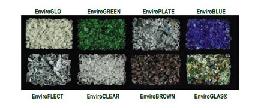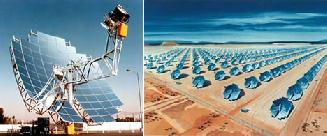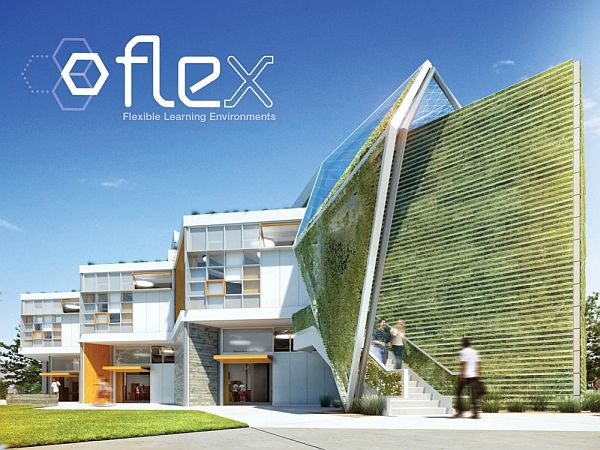
Just as the intricacies of the architectural wonders in the movie Inception intrigue and charm an average mind, there are a lot of architectural miracles that would make the intricate which is unnecessarily complicated, divinely simple. In 2010, the Los Angeles Unified School District (LAUSD) held a design competition for a flexible solution to replace portable buildings across the district, and HMC Architects accepted the challenge.
The district asked them to ignore their standards and put an emphasis on an ideas-based approach. They wanted creative, progressive responses to their problem, not dressed-up modular buildings. Although their design solution, which they named Flex, did not win the competition, their end product is a portable classroom solution that can be used at any school, with hope that their design can inspire other school districts to think differently when it comes to portable classrooms.
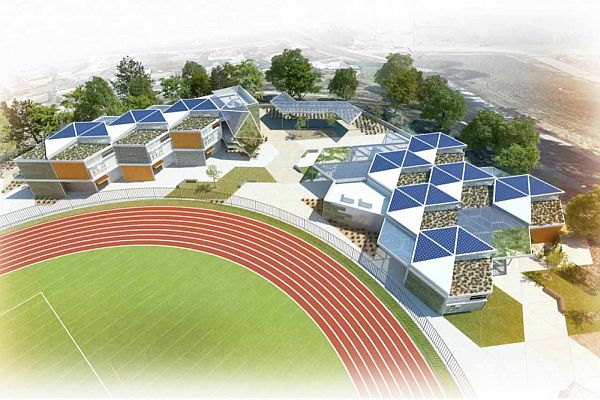
They started the design process by examining the standard classroom “box.” First, the teaching wall is usually centered on one wall, all students facing forward. Second, the two sides and back wall of the classroom are mostly used for hanging student work, fixed computer stations, large displays, maps or storage. Third, and most important, the corners of the box-shaped classroom are largely unused for instruction due to the fact that they are hard to see from the opposite sides of the room. These corners are often used as informal storage areas, or clutter. The real estate that is usable for instruction on a 30’ long teaching wall is actually about 20’ due to sight lines.
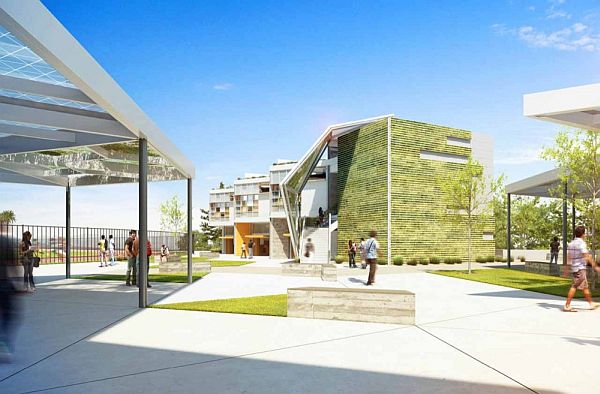
Sustainable strategies were integrated from the outset to create a space that was designed for quick assembly/disassembly and built from recycled materials. They also explored integrating photovoltaic panels, green screens, rainwater harvesting, chilled beam system, dry fixtures, gray-water reuse, low carbon materials and zero waste construction.
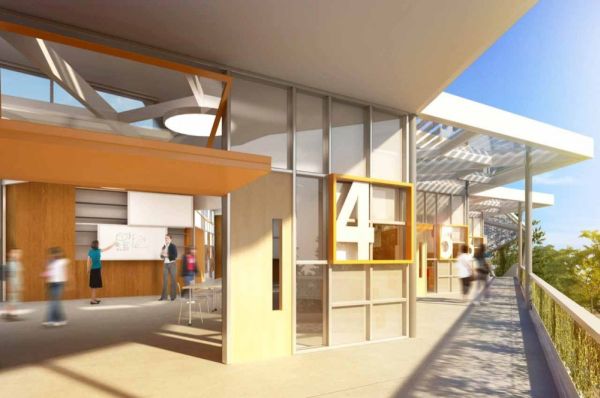
In the case of the classroom, form follows function, as the space conforms to the students’ and teachers’ needs, not the other way around. Due to the uniformity of the shape, all beams, columns, and wall panels/storefront systems can be the same size. Using Flex, the entire school can be mass produced in a factory and shipped to the site for quick assembly. Also, the panels are interchangeable, and customization has endless possibilities.
An interior modular learning system can be integrated using a kit-of-parts to create endless configurations. The hexagon can also be configured to accommodate a variety of spaces including but not limited to administration, library, food service, multi-purpose or indoor dining. Imagine the infinite possibilities when new design solutions meet and direct the changing landscape of classroom instruction.
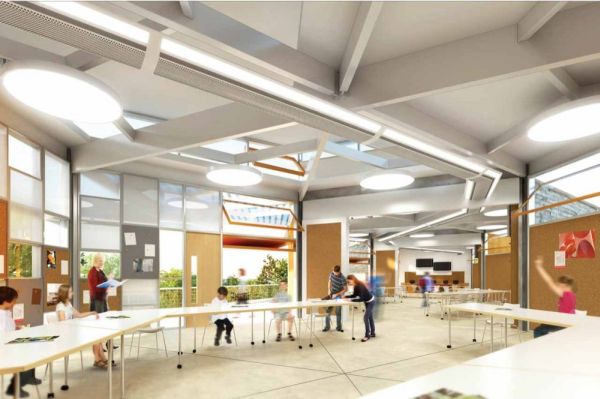
Via: ArchDaily



